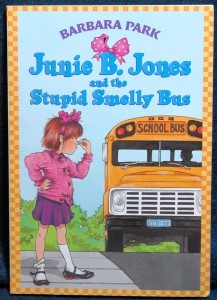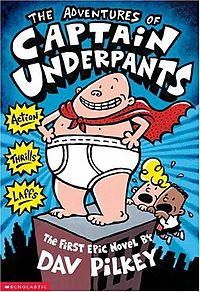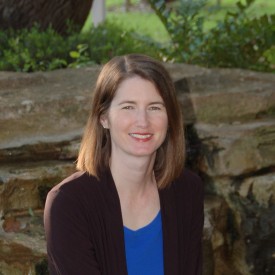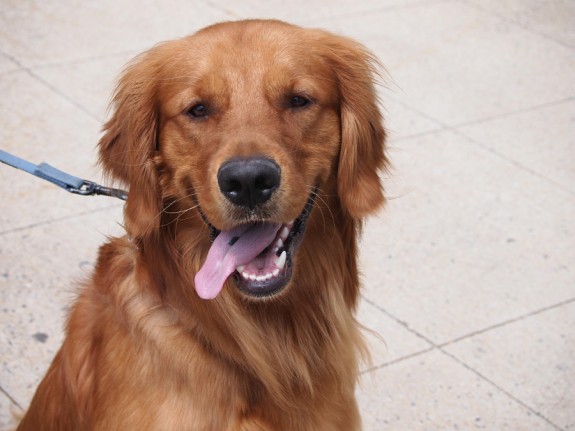I have a confession to make. My two daughters loved Junie B. Jones when they were little. Adored that whole (giant) series by Barbara Park. And I hated those books with a fiery passion. As a narrator, Junie B. was rude, impulsive and disobedient, with poor grammar and misspelled words to boot. She was my nemesis. I read her to my girls anyway.
Plenty of kidlit books show kids disobeying, or even being straight-up subversive. In general, kids eat these books up and ask for more.
This desire can make the adults in their lives very, very nervous. “We shouldn’t be teaching our kids that it’s okay to misbehave,” they say. Some parents prefer to keep those books out of the hands of children at all. Even writers might avoid creating child characters who are wildly and unapologetically disobedient because they are afraid of giving kids “bad role models.” Numerous books have caught a lot of flak for that very thing.
But if all our bad characters suddenly became accommodating and sweet, that would be a loss for our children. There is a reason these books are so appealing.
Why Kids Love Bad Kid Characters
Have you ever stopped and really listened to what children hear so much of their day?
 No, don’t eat your peas with your fingers.
No, don’t eat your peas with your fingers.
Put that bug down and wash your hands.
Stop poking your sister’s arm. For the hundredth time.
Life is a veritable flood of no’s. And yes, it’s often for their safety (and our sanity), but through literature, children get to experience the thrill of defiance–and thus independence– safely, without paying the price of it. The very kids who love these books so much, in fact, are often the ones who would never actually do any of the things in the story. And that’s the point.
Bad Characters Serve Many Purposes
In Horn Book Magazine, the article, “Doing the Crime without Doing the Time” emphasizes that this desire to explore disobedience is developmentally normal and states, “So rather than try out naughtiness, children turn to book characters who actually do what they themselves have only dreamt about. Living vicariously is the perfect alternative” (Angotti 96).
Furthermore, adults who read about these “bad” characters with their children or students have a great jumping off place for discussions (not lectures!) about why the characters made the choices they did and what the child readers thought about it. The conversation can include what kind of consequences occurred and sometimes, if the book is realistic, the answer might be: none.
Bad Characters Have Wide Appeal
Besides, bad characters don’t just appeal to children. Think about your favorite characters. How many of them are villains? My friend named her dog after Dexter. Another friend had a life-sized Darth Vader poster on her door for years. Dracula has spawned how many books about vampires, sparkly and otherwise? And millions have loved Scarlet O’Hara with her unflinching and unapologetic hatred of the kind and gentle Melanie. I sure did. Scarlet was fascinating.
So why should children’s books be devoid of interesting characters? Frankly, characters who always do what they are told are boring, no matter how old they are. There’s no conflict, and thus, no story. If all our children’s books had titles like Everyone Shares so Nicely! would kids love bedtime stories so much?
Want to Write a Bad Kid Character?
This is tricky to do well, so it might take several tries to hit the right balance. Let me state up front, if characters like these really get on your nerves, don’t write about them. The reader will pick up on your distaste and it will reflect on their impressions of your character. But if you want to give it a shot, first of all, observe some children. This sounds obvious, but it’s painfully clear that not all writers do this. Kids are smart. There is usually some kind of logic behind their “bad behavior.” It might be that someone took something of theirs. It might be that they know if they don’t hide the evidence of their candy gorging, they will lose TV for a week. Or maybe they woke up early and missed nap—adults get cranky when they are hungry and tired, too. So there are actual reasons why kids misbehave and you need to help your readers understand why this child is acting this way.
on your distaste and it will reflect on their impressions of your character. But if you want to give it a shot, first of all, observe some children. This sounds obvious, but it’s painfully clear that not all writers do this. Kids are smart. There is usually some kind of logic behind their “bad behavior.” It might be that someone took something of theirs. It might be that they know if they don’t hide the evidence of their candy gorging, they will lose TV for a week. Or maybe they woke up early and missed nap—adults get cranky when they are hungry and tired, too. So there are actual reasons why kids misbehave and you need to help your readers understand why this child is acting this way.
In a similar vein, keep the character sympathetic in some way, even if it is just the kid needing a hug at the end of the story. The children in Captain Underpants have to deal with a truly obnoxious principal. If the principal had been a super cool guy who loved kids, we would not be cheering for the boys who trick him. So we’ve got to have some reason to root for the character or like them or understand them, at the very least.
Finally, it’s critical to read a lot of the books with these kinds of characters. Just like with any writing venture, you need to know what’s been done, so you can do something fresh and unique that only you could write.
Take a Risk and Try Some Good Bad Kid Stories
So take a deep breath and try one of these books for kids with protagonists who aren’t afraid to get in trouble:
Picture books:
- No, David! by David Shannon. This modern series of picture books are adored by young children everywhere. (Speaking of Dracula, David’s teeth look absolutely vampiric, I think.)
- Where the Wild Things Are by the brilliant Maurice Sendak. For his bad behavior, Max gets sent to bed without his supper. Does he sit in his room and cry? Not our Max. Instead, he goes on an amazing adventure and becomes King of the Wild Things (and still gets his supper, in the end.) A classic that upset many people at the time of its publication and helped change the face of children’s literature.
- 11 Experiments That Failed, by Jenny Offill and Nancy Carpenter. Food dissolving into shoes; bottles flooding the toilet: Curious George meets Ramona Quimby in this fun science sleuthing story.
Middle Grade, listed from younger to older audiences:
- Bad Kitty–As advertised, this cat created by Nick Bruel disobeys repeatedly (and hilariously), but the stories end on a sweet note. If you aren’t sure about this whole let-them-read-bad-characters-idea, this is a good book series to start with.
- Captain Underpants—This graphic novel series was the top challenged book in 2013 and 2012. (Read about all the hubbub here). I admit I don’t love the potty humor or the boys’ attitudes as they manipulate their caveman of a principal, but children do—and they read and reread this series.
- Calvin and Hobbes—Yes, the comic strip. The precocious-but-perpetually-in-trouble little boy with his wise tiger has caught the hearts of every generation since he was first created.
- Harry Potter—Before you accuse me of blasphemy, consider that Harry breaks rules all the time and rarely suffers negative consequences for it. He may not be the traditional “bad character” but if you want to throw stones at characters for lying, cheating or defiance, you have to consider Harry does it all. In fact, just try to count how many times you see the phrase “Harry lied.” And then keep reading.
Bad characters help kids explore their world. But aside from all the psychology, they are also just fun, entertaining stories. They get kids excited to read. That’s good enough for me. Feel free to enjoy these books with your kids or students!
Mischief managed.
…………………………….
Work Cited:
Angotti, Jessica. “Committing the Crime With Out Doing the Time.” Horn Book Magazine, Mar/Apr2010, Vol. 86 Issue 2, p92-96, 5p. (Article), Database: Literary Reference Center
All other books and articles referenced are hyperlinked within article.
…………………………
 Amy holds a Masters of Library Science along with a certification in school librarianship. She is a former reading and English teacher, mostly for 6th-8th graders. Her debut book, FAIRY KEEPER, is an upper-middle-grade fantasy, now available from Curiosity Quills Press. She currently lives in Germany with her family, though they still call Texas home. Her daughters are 9 and 11 years old. As you might imagine, middle grade books are a hot commodity around their house.
Amy holds a Masters of Library Science along with a certification in school librarianship. She is a former reading and English teacher, mostly for 6th-8th graders. Her debut book, FAIRY KEEPER, is an upper-middle-grade fantasy, now available from Curiosity Quills Press. She currently lives in Germany with her family, though they still call Texas home. Her daughters are 9 and 11 years old. As you might imagine, middle grade books are a hot commodity around their house.







